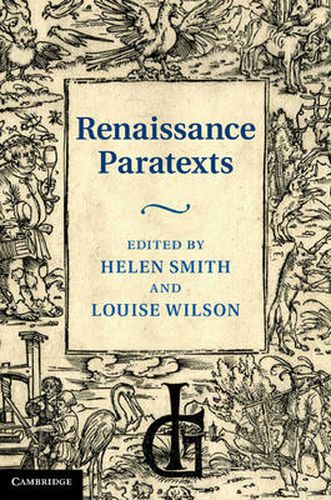Readings Newsletter
Become a Readings Member to make your shopping experience even easier.
Sign in or sign up for free!
You’re not far away from qualifying for FREE standard shipping within Australia
You’ve qualified for FREE standard shipping within Australia
The cart is loading…






In his 1987 work Paratexts, the theorist Gerard Genette established physical form as crucial to the production of meaning. Here, experts in early modern book history, materiality and rhetorical culture present a series of compelling explorations of the architecture of early modern books. The essays challenge and extend Genette’s taxonomy, exploring the paratext as both a material and a conceptual category. Renaissance Paratexts takes a fresh look at neglected sites, from imprints to endings, and from running titles to printers’ flowers. Contributors’ accounts of the making and circulation of books open up questions of the marking of gender, the politics of translation, geographies of the text and the interplay between reading and seeing. As much a history of misreading as of interpretation, the collection provides novel perspectives on the technologies of reading and exposes the complexity of the playful, proliferating and self-aware paratexts of English Renaissance books.
$9.00 standard shipping within Australia
FREE standard shipping within Australia for orders over $100.00
Express & International shipping calculated at checkout
In his 1987 work Paratexts, the theorist Gerard Genette established physical form as crucial to the production of meaning. Here, experts in early modern book history, materiality and rhetorical culture present a series of compelling explorations of the architecture of early modern books. The essays challenge and extend Genette’s taxonomy, exploring the paratext as both a material and a conceptual category. Renaissance Paratexts takes a fresh look at neglected sites, from imprints to endings, and from running titles to printers’ flowers. Contributors’ accounts of the making and circulation of books open up questions of the marking of gender, the politics of translation, geographies of the text and the interplay between reading and seeing. As much a history of misreading as of interpretation, the collection provides novel perspectives on the technologies of reading and exposes the complexity of the playful, proliferating and self-aware paratexts of English Renaissance books.